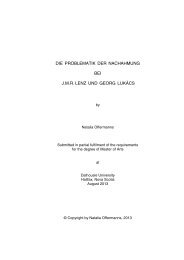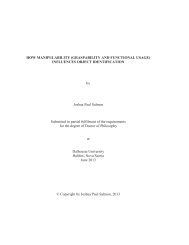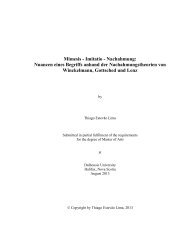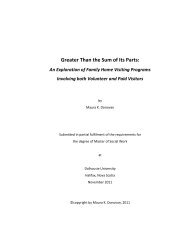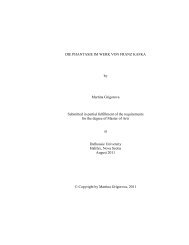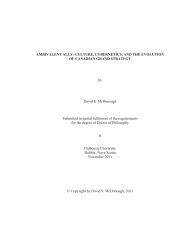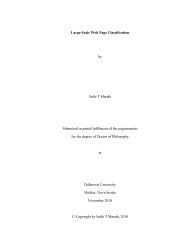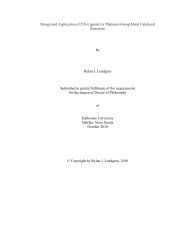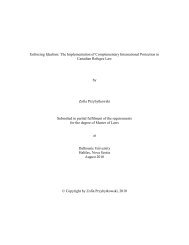ADAPTING TRISTRAM SHANDY by Adria Young Submitted in ...
ADAPTING TRISTRAM SHANDY by Adria Young Submitted in ...
ADAPTING TRISTRAM SHANDY by Adria Young Submitted in ...
You also want an ePaper? Increase the reach of your titles
YUMPU automatically turns print PDFs into web optimized ePapers that Google loves.
associations and recognitions made <strong>by</strong> the reader/viewer, this process, the connection-<br />
mak<strong>in</strong>g, relies upon a prior knowledge of the text. 89 Yet, not even Coogan, the “lead<strong>in</strong>g<br />
man” and self-proclaimed “star,” has read the whole book, which comments upon the<br />
cognitive demands of the narrative (Coogan falls asleep when he tries to read the book)<br />
and gestures towards its critical reputation as an “unreadable” text. 90 We are left on our<br />
own to associate between the novel, the film, and its contexts, just as we are left to<br />
connect the narrative fragments and material manipulations of Tristram Shandy. And this<br />
attempt is guided <strong>by</strong> our expectations of narrative cohesion, especially as a c<strong>in</strong>ematic<br />
convention. But these expectations are challenged <strong>by</strong> the narrative stasis with<strong>in</strong> the film.<br />
David H. Richter def<strong>in</strong>es narrative stasis as the “opposite of narrativity” (Richter 70). 91<br />
We experience narrative stasis <strong>in</strong> the moments when the narrative “comes to a dead stop”<br />
and we are filled with a sense of “be<strong>in</strong>g somewhere as opposed to gett<strong>in</strong>g anywhere”<br />
(Richter 70). This is accomplished <strong>in</strong> the film through the merger of generic and<br />
c<strong>in</strong>ematic conventions that operate <strong>in</strong> a hypermedial way: “Look at me! I'm a movie!<br />
Don't forget you're watch<strong>in</strong>g a movie!” The moments of narrative stasis, which are the<br />
various story fragments and scenes of the film that merely pass time rather than action,<br />
are cognitively jo<strong>in</strong>ed together <strong>by</strong> the viewer to impose a l<strong>in</strong>ear progression toward a<br />
resolved end. But an audience seek<strong>in</strong>g this pattern will be disappo<strong>in</strong>ted because what the<br />
film really provides is a series of multi-conventional episodes that shows the viewer that<br />
the c<strong>in</strong>ematic experience of Tristam Shandy must be as hodge-podge as the novel; it must<br />
be as Shandean. By the end of the movie, we are rem<strong>in</strong>ded that the 'unf<strong>in</strong>ished' film is an<br />
adaptation of an 'unf<strong>in</strong>ished' novel. 92 Unlike most other literary adaptations, the viewer is<br />
denied typical c<strong>in</strong>ematic satisfactions like a complete story or even a firm genre. Instead,<br />
67



